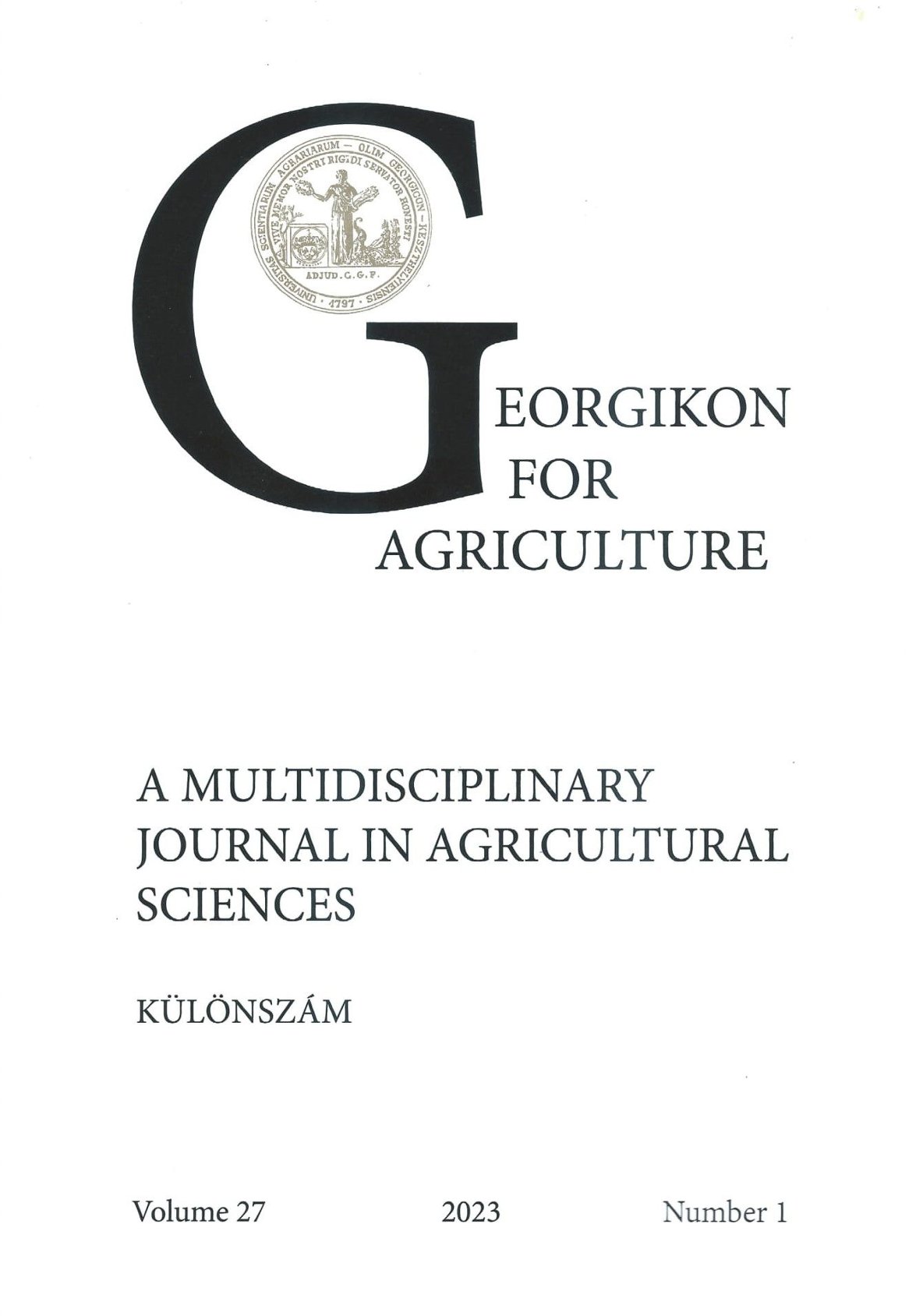A tolerancia hatása egyes almát fertőző gombafajok megjelenésére
Keywords:
resistance, apple, powdery mildew, scab, variety choiceAbstract
Our studies were carried out in Szabadság-puszta near Veszprém in an apple orchard between 08.04.-06.10.2022. The degree and intensity of powdery mildew infection of the Idared variety were determined on all trees in treated and untreated rows. For other apple cultivars (Luna, Bonita, Gála), 100 leaf samples were randomly collected to determine the powdery mildew and scab infection. 83 leaves and 14 fruits out of 100 leaf and fruit samples of the variety Gála were infested with scabs in the untreated area. No infected leaves were found in the treated area. Symptoms were observed only on three of the 100 investigated fruits. On the Idared variety, the incidence of powdery mildew infection was much higher in the untreated than in the treated area, but the level of infection was equally high. On the Luna variety, no scab or mildew symptoms were observed during the season due to high tolerance. In the case of the Bonita cultivar, at the end of the growing season, 62 among 100 leaf samples showed mildew symptoms, while no scab was observed on the variety.
References
Beresford, R. M. and Manktelow, D. W. L. 1994. Economics of reducing fungicide use by weather-based disease forecasts for control of Venturia inaequalis in apples. N.Z.J. CropHortic. Sci. 22. 113-120.
Brook, P. J. 1976. Seasonal pattern of maturation of Venturia inaequalis ascospores in New Zealand. N.Z.J. Agric. Res. 19. 103-109.
Butt, D. J., Martin, K. M., and Swait, A. J. J. 1983. Apple powdery mildew: Damage, loss and economic injury level. Proceedings of the 10th International Congress of Plant Protection, Brighton, U.K. 118.
Ellis, M. A., Ferree, D. C. and Spring, D. E. 1981. Photosynthesis, transpiration, and carbohydrate content of apple leaves infected by Podosphaera leucotricha. Phytopathology 71. 392-395.
MacHardy, W. E. 1996. Apple Scab: Biology, Epidemiology, and Management. St. Paul, MN: The American Phytopathological Society Press.
MacHardy, W. E. and Gadoury, D. M. 1986. Patterns of ascosporedis charge by Venturia inaequalis in commercial apple orchards. Phytopathology 76. 985-990.
Serdani, M., Spotts, R. A., Calabro, J. M., and Postman, J. D. 2005. Powdery mildew resistance in Pyrus germ plasm. Acta Hortic. 609-613.
Schwabe, W. F. S. 1979. Changes in scab susceptibility of apple leaves as influenced by age. Phytophylactica 11. 53-56.
Schwabe, W. F. S., Jones, A. L. and Jonker, J. P. 1984. Changes in the susceptibility of developing apple fruit to Venturia inaequalis. Phytopathology 74. 118-121.
Szkolnik, M. 1969. Maturation and discharge of ascospores of Venturia inaequalis. Plant Dis. Rep. 53. 534-537.
Xu, X. M. and Robinson, J. 2005. Modelling the effects of wetness duration and fruit maturity on infection of apple fruits of Cox's Orange Pippin and two clones of Galaby Venturia inaequalis. PlantPathol. 54. 347-356.
Yoder, K. S. 2000. Effect of powdery mildew on apple yield and economic benefits of its management in Virginia. PlantDis. 84. 1171-1176.
Downloads
Published
Issue
Section
License
Copyright (c) 2023 Sólyom Laura, Lengyel Kálmán, Takács András Péter

This work is licensed under a Creative Commons Attribution-NonCommercial-NoDerivatives 4.0 International License.
Cikkre a Creative Commons 4.0 standard licenc alábbi típusa vonatkozik: CC-BY-NC-ND-4.0. Ennek értelmében a mű szabadon másolható, terjeszthető, bemutatható és előadható, azonban nem használható fel kereskedelmi célokra (NC), továbbá nem módosítható és nem készíthető belőle átdolgozás, származékos mű (ND). A licenc alapján a szerző vagy a jogosult által meghatározott módon fel kell tüntetni a szerző nevét és a szerzői mű címét (BY).




